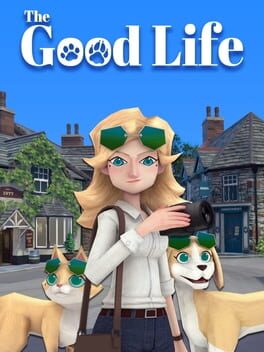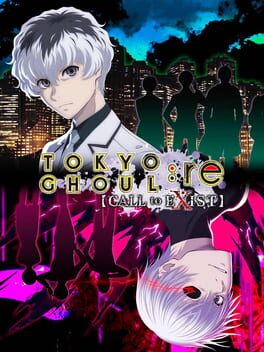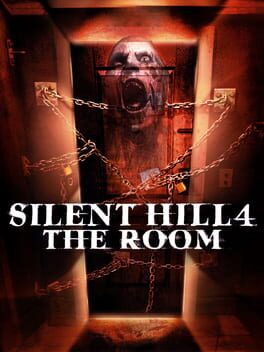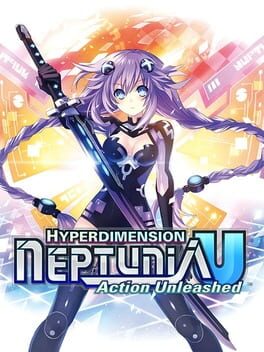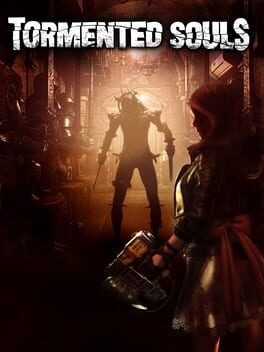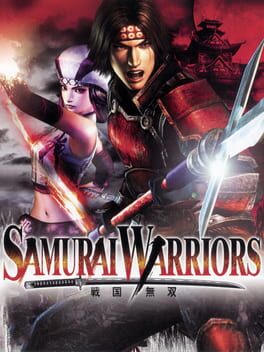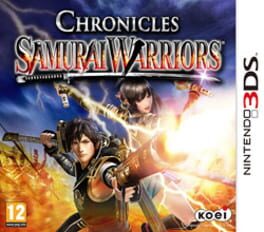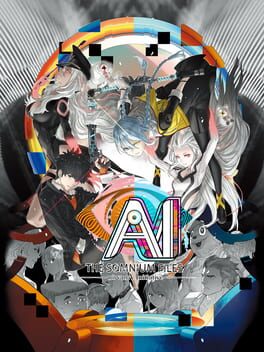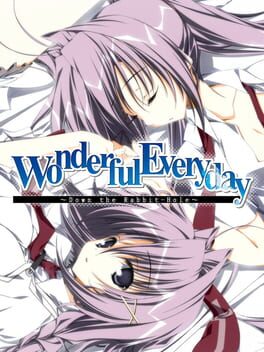Texhs
2020
2021
Had very little idea what to expect from this one besides the game breaking the fourth wall frequently to apologize for the monotonous design choices, which was super annoying but thankfully I found… something to like, although I’m still not really sure what that something is. The writing is predictably weird for a Swery game, not particularly sharp or clever but it’s somehow incentivizing enough in its oddity to make me want to carry through with the main story. Somehow it’s fallen into the well of huge, empty open-world games with mindless checklists that plague the industry currently, but it also emulates some of Shenmue’s life-sim-RPG mechanics, which is not a bad thing to crib from. Kind o a shame they’re shallow but it was at least appealing for a few hours. “Charming” may be too strong a word for all this, but it’s… quaint? It’s got that PS3-era C-list Japanese dev feel to it, which makes sense given Deadly Premonition.
I dilly-dallied with some sidequests while doing the main story at my own pace, but I checked out pretty quickly after seeing the ending. The main quest is bonkers enough to give the illusion of life to the town, but without it you realize just how banal the game world is. The sidequests are frustratingly dull and the writing isn’t strong enough to make them worth it. There also isn’t much of in the ways of rewards to incentivize doing them, the prizes are usually ass and not much to spend your money on either. Don’t even get me started on 100% completion, which involves dozens of hours grinding on menial tasks with nothing to gain besides saying you did it. Kind of bitterly ironic that the game’s story is meant to persuade Naomi of the value of the town and then when the curtains fall - you realize it really is just a goddamn hellhole.
I dilly-dallied with some sidequests while doing the main story at my own pace, but I checked out pretty quickly after seeing the ending. The main quest is bonkers enough to give the illusion of life to the town, but without it you realize just how banal the game world is. The sidequests are frustratingly dull and the writing isn’t strong enough to make them worth it. There also isn’t much of in the ways of rewards to incentivize doing them, the prizes are usually ass and not much to spend your money on either. Don’t even get me started on 100% completion, which involves dozens of hours grinding on menial tasks with nothing to gain besides saying you did it. Kind of bitterly ironic that the game’s story is meant to persuade Naomi of the value of the town and then when the curtains fall - you realize it really is just a goddamn hellhole.
2012
Whoever designed this game is evil, and a menace to society. The cozy-game aesthetic trappings quickly unravel into a high-maintenance career nightmare, each conveyor belt representing one of the circles of hell. The design is actually genius, and yet I can't imagine myself playing it for long periods of time because it feels like working retail on Black Friday.
Do you ever wish time would stand still? Being able to stay in your happy place for as long as you wished, without regard to any pressing obligations?
Room 302 is a purgatorial space that heals Henry not in spite of, but because of its drab decor, its perpetual stasis, its agelessness. I found the apartment to have an enchantingly banal quality to it, feeling like I’ve been in this exact place despite knowing this not to be true, a place I stop to admire for just one moment, and no more, in-between trips to the otherworld. Life is only observed at your leisure through the various peep-holes, not experienced, providing a much-needed relief from the constant stimuli of the world. It’s Freudian as hell, but it makes sense why Walter’s twisted perspective sees the room as his mother and is associated with fetal imagery - a place of protection and nourishment.
This quality ceases in the game’s second half when hauntings periodically invade the apartment, twisting the healing quality of the room into a draining one. But it’s not just for your own health that you must return to your quest, for poor Eileen is stuck in the otherworld fending for herself every moment apart from her until you make your return, gradually lowering your chances of getting a good ending, as the amount of near-invincible enemies pursuing you grow in number. The bliss initially offered by the room is only a fantasy - life happens whether we like it or not. A willful ignorance will allow the suffering of others to perpetuate.
The game’s low simmer in the first half can sometimes be a bit dull, but as these pressures are placed on you, 4 becomes the most anxiety-inducing of the main SH games, a mad rush to the finish increasing in tempo without care for the player maintaining rhythm. Frustrating in more ways intentional than not, I can’t say that playing this was as pleasant of a ride as 3, but when I got the best ending and watched the credits roll, my sigh of relief had a satisfying weight, for it requires a good amount of skill to create something that hits as many nerves as it does in a short period of time. In a good way, I don’t want to revisit this game for a long time.
Room 302 is a purgatorial space that heals Henry not in spite of, but because of its drab decor, its perpetual stasis, its agelessness. I found the apartment to have an enchantingly banal quality to it, feeling like I’ve been in this exact place despite knowing this not to be true, a place I stop to admire for just one moment, and no more, in-between trips to the otherworld. Life is only observed at your leisure through the various peep-holes, not experienced, providing a much-needed relief from the constant stimuli of the world. It’s Freudian as hell, but it makes sense why Walter’s twisted perspective sees the room as his mother and is associated with fetal imagery - a place of protection and nourishment.
This quality ceases in the game’s second half when hauntings periodically invade the apartment, twisting the healing quality of the room into a draining one. But it’s not just for your own health that you must return to your quest, for poor Eileen is stuck in the otherworld fending for herself every moment apart from her until you make your return, gradually lowering your chances of getting a good ending, as the amount of near-invincible enemies pursuing you grow in number. The bliss initially offered by the room is only a fantasy - life happens whether we like it or not. A willful ignorance will allow the suffering of others to perpetuate.
The game’s low simmer in the first half can sometimes be a bit dull, but as these pressures are placed on you, 4 becomes the most anxiety-inducing of the main SH games, a mad rush to the finish increasing in tempo without care for the player maintaining rhythm. Frustrating in more ways intentional than not, I can’t say that playing this was as pleasant of a ride as 3, but when I got the best ending and watched the credits roll, my sigh of relief had a satisfying weight, for it requires a good amount of skill to create something that hits as many nerves as it does in a short period of time. In a good way, I don’t want to revisit this game for a long time.
By no means a character action game that even approaches the legends in the genre, but still satisfying in the way fast food French fries are: not very nutritious or rich in flavor, but a quick fix that satisfies that greasy craving. Even compared to Senran Kagura, Neptunia U is a bit basic and easy by action game standards, but the characters still move so fluidly and play in a way fitting for their characters that it hits right for fans of the series that just wants more of the cast. The main campaign missions being short and sweet keeps the simplicity from wearing down on the player, but the bonus modes that unlock after completion, a 1v1 tournament and a survival mode of sorts, both work against what’s gratifying about the combat due to play sessions being too short and too long, respectively, and just feels stale instead. Regardless, I still view this spin-off fondly as a nice bit of comfort food.
1995
I actually got to play this on a arcade cabinet! Outfoxxies represents a diametric opposite of competitive Smash Bros. in terms of its design as a platform fighter. Melee attacks do little-to-no damage and combos are nonexistent in favor of item drops doing the bulk of the damage; the stages are so large and difficult to traverse they make New Pork City look quaint; so much is happening on-screen at any given time that it’s impossible to take everything in at once without some sort of sensory overload. Outfoxxies laughs at the need for other fighting games to be “fair” and “balanced” and instead delivers a uniquely manic experience that is equal parts frustrating and mesmerizing.
I love the espionage-thriller aesthetics paired with some goofy characters and stages. You have John Smith and Betty Doe to select if you want to play the assassin role straight… or you can play as the chimpanzee or pair of homicidal twins, fighting in the middle of a circus show. Suda51’s love for this game makes so much sense. I was so enamored by this wonderfully weird, dark sense of humor that I kept pushing through even when I lost and felt frustrated because I really wanted to see what oddities the game would throw at me on the next stage. The style is the substance, and I think everybody owes it to themselves to try this game once, preferably with friends, even if my description of the gameplay sounds unpleasant to you.
I love the espionage-thriller aesthetics paired with some goofy characters and stages. You have John Smith and Betty Doe to select if you want to play the assassin role straight… or you can play as the chimpanzee or pair of homicidal twins, fighting in the middle of a circus show. Suda51’s love for this game makes so much sense. I was so enamored by this wonderfully weird, dark sense of humor that I kept pushing through even when I lost and felt frustrated because I really wanted to see what oddities the game would throw at me on the next stage. The style is the substance, and I think everybody owes it to themselves to try this game once, preferably with friends, even if my description of the gameplay sounds unpleasant to you.
2021
I was really looking forward to trying Tormented Souls as a fan of fixed-camera survival horror, and I was pretty disappointed by how rough around the edges it felt. I’d be tempted to compare it to Yooka-Laylee as a relic of game design from the 90s that has been prettied up with contemporary graphics, but I think that’d do a disservice to very design choices from that era that turned hardware limitations into strengths. Tormented grasps the form but not the function of these decisions, so while the ambience is similar to, say, the RE1make, a lot of that gives way with poor encounter design.
For example, the camera tends to obscure enemies present in a room, first cuing you to your presence via sound cues, which is a technique used effectively for tension by many classic survivor horrors that’s made fair by a good auto-aim system that alerts you to where the danger is. Tormented’s auto-aim is far less functional, requiring such a close proximity to trigger, and with camera angle changes mapped at such awkward areas, that I would run blindly directly into enemies. Also, this game’s filled with cramped corridors that make evasion of enemies impossible, necessitating combat and in a way, that’s actually less tense than having the option to avoid fighting. I never really had to engage in the quick-decision making and the fear of my risky choice not paying off, while in this game, I felt expected to blow my load at every enemy, and blow I did.
Issues like these aren’t really catastrophic but it’s hard to not think “man I wish I was playing Resident Evil”. I enjoyed the experience at parts, I actually do commend most of the puzzle design for being fairly balanced and as mentioned, when it was just exploring the hospital without enemies, there was an uneasy atmosphere I found effective, if not as strong as the games that inspired it. Some of the enemy designs were also really neat and freaky when they weren’t ableist! I’ll take what I get from this but I do wish we could get a fixed-camera survival horror game that doesn’t feel as archaic as it actually is.
Note: I played the PS4 version which is actually kind of crap. Get it on a more powerful system if you can.
For example, the camera tends to obscure enemies present in a room, first cuing you to your presence via sound cues, which is a technique used effectively for tension by many classic survivor horrors that’s made fair by a good auto-aim system that alerts you to where the danger is. Tormented’s auto-aim is far less functional, requiring such a close proximity to trigger, and with camera angle changes mapped at such awkward areas, that I would run blindly directly into enemies. Also, this game’s filled with cramped corridors that make evasion of enemies impossible, necessitating combat and in a way, that’s actually less tense than having the option to avoid fighting. I never really had to engage in the quick-decision making and the fear of my risky choice not paying off, while in this game, I felt expected to blow my load at every enemy, and blow I did.
Issues like these aren’t really catastrophic but it’s hard to not think “man I wish I was playing Resident Evil”. I enjoyed the experience at parts, I actually do commend most of the puzzle design for being fairly balanced and as mentioned, when it was just exploring the hospital without enemies, there was an uneasy atmosphere I found effective, if not as strong as the games that inspired it. Some of the enemy designs were also really neat and freaky when they weren’t ableist! I’ll take what I get from this but I do wish we could get a fixed-camera survival horror game that doesn’t feel as archaic as it actually is.
Note: I played the PS4 version which is actually kind of crap. Get it on a more powerful system if you can.
2014
Post-ironic capitalism. Satirizing the grindset in the most toothless manner possible while transparently begging for money might’ve been amusing as some parody on corporate anti-capitalist media made for profit, except it utilizes the same Skinner box mechanics as so many other idle games to entrap players and compel them to spend to watch number go up. There’s not even any attempt at some sort of novel spin on idle gaming to set it apart; as an actual game, it’s barebones. The naked shamelessness in being the very thing it satirizes yields a special sort of disgust from me.
2004
Omega Force has never made a Musou with grittiness of the first Drakengard game, but this is the closest they’ve ever come atmospherically even if it still doesn’t come anywhere near the taboo subject matter that Drakengard is known for, and that’s saying something when they’ve also made a Berserk game. Plenty of storylines have a dull melancholy to them, far earthier than the more theatrical, romanticized presentation of tragedy in Samurai Warriors 4. This makes the first Samurai Warriors so fascinating in hindsight, when the series hadn’t found the voice it currently has but the one it has before is in some ways, even more interesting.
The roster is small and carefully selected, where every character is a solo agent and doesn’t walk the same path as anybody else (except for Kunoichi, who was created to be Yukimura Sanada’s cheerleader… I don’t like how she was handled in this installment). It breaks from the kingdom-divided Dynasty Warriors roster and results in this isolating feeling; despite having several allies in each battle, nobody is guaranteed to follow them in their ambitions. As much as I dislike the castle stages gameplay-wise for breaking away from the large, active battlefields that are a huge part of Musou’s appeal, they do work thematically to enhance that dark, lonely experience in the dim corridors.
Two of my favorite characters in this installment are Noh and Oichi, Nobunaga Oda’s wife and sister respectively. Noh has a twisted attraction to Oda, clearly loving him very much in a sensual way but also feeling possessive to the point that she wants to be the one to kill him. So, when Mitsuhide Akechi rebels against Oda in Honnoji, Noh is forced to choose between her bloodlust in getting the first drop on Oda, or her sexual lust and believing there’s still a way out for both of them. Noh has been one of my favorite SW characters for a while, but I was pleasantly surprised by this darker, more sadistic version of her that still felt human. Oichi is portrayed as a teenage girl who fights with a kendama, which sounds like it would be at odds with how I describe the tone, but a lot of her story is forcing her to acknowledge the harshness of war, with one of my favorite stages being Oichi’s Battle of Anegawa: her brother Oda and her husband Nagamasa Azai are now at war, as she wanders the battlefield alone trying to find a way to stop the fighting as everyone tells her to grow up, potentially culminating in a showdown with Noh. Female characters in Dynasty/Samurai Warriors are so interesting because there usually isn’t as much recorded about them, and Noh/Oichi’s depiction in this game show how to creatively give them their own arcs and inner conflicts while meaningfully acknowledging their relationships with historically famous men.
I doubt anybody who isn’t as sucked into Musou as I am is really going to care for these nuances in presentation, it’s still a PS2-era Musou game with all the faults that usually entails, but the more you’ve played, the more you can appreciate that Omega Force came out the gate swinging boldly with a different artistic vision for what would become the sister series to Dynasty Warriors.
The roster is small and carefully selected, where every character is a solo agent and doesn’t walk the same path as anybody else (except for Kunoichi, who was created to be Yukimura Sanada’s cheerleader… I don’t like how she was handled in this installment). It breaks from the kingdom-divided Dynasty Warriors roster and results in this isolating feeling; despite having several allies in each battle, nobody is guaranteed to follow them in their ambitions. As much as I dislike the castle stages gameplay-wise for breaking away from the large, active battlefields that are a huge part of Musou’s appeal, they do work thematically to enhance that dark, lonely experience in the dim corridors.
Two of my favorite characters in this installment are Noh and Oichi, Nobunaga Oda’s wife and sister respectively. Noh has a twisted attraction to Oda, clearly loving him very much in a sensual way but also feeling possessive to the point that she wants to be the one to kill him. So, when Mitsuhide Akechi rebels against Oda in Honnoji, Noh is forced to choose between her bloodlust in getting the first drop on Oda, or her sexual lust and believing there’s still a way out for both of them. Noh has been one of my favorite SW characters for a while, but I was pleasantly surprised by this darker, more sadistic version of her that still felt human. Oichi is portrayed as a teenage girl who fights with a kendama, which sounds like it would be at odds with how I describe the tone, but a lot of her story is forcing her to acknowledge the harshness of war, with one of my favorite stages being Oichi’s Battle of Anegawa: her brother Oda and her husband Nagamasa Azai are now at war, as she wanders the battlefield alone trying to find a way to stop the fighting as everyone tells her to grow up, potentially culminating in a showdown with Noh. Female characters in Dynasty/Samurai Warriors are so interesting because there usually isn’t as much recorded about them, and Noh/Oichi’s depiction in this game show how to creatively give them their own arcs and inner conflicts while meaningfully acknowledging their relationships with historically famous men.
I doubt anybody who isn’t as sucked into Musou as I am is really going to care for these nuances in presentation, it’s still a PS2-era Musou game with all the faults that usually entails, but the more you’ve played, the more you can appreciate that Omega Force came out the gate swinging boldly with a different artistic vision for what would become the sister series to Dynasty Warriors.
I’m disappointed that this game doesn’t get the love it deserves. I don’t doubt that this game would bounce off many people as it’s not a particularly flashy or immediately captivating Musou, but I think it’s worth acknowledging for the new ideas it brought to the table.
For starters, this is the first SW entry, if not Musou game in general, that allows the player to select 4 characters for each level to swap control between and issue commands to when not controlled. I cannot stress how much I love this design decision; SW3’s maps (which this game borrows) are notably large and while the pacing feels sluggish in that game due to the sometimes-large distance the player has to cover between objectives, in Chronicles you can instead command your other characters to travel to different corners of the map as you focus on the objective in front of you. This accelerates the pacing greatly as you can effectively teleport to your destinations instantly when used correctly while still capturing the grander sense of scale that the maps were designed to convey. It also taps into the tactical edge of Musou that, while admittedly light, gives them a different flavor compared to most other games of a similar make. You will have to make decisions about which characters you want to delegate to each objective based on their distance and your comfort level in controlling them, and how to make the most of characters who don’t have any objectives to delegate.
I also think the create-a-character protagonist is used to great effect here: in contrast to Dynasty Warriors, SW doesn’t have clearly defined factions, instead following dozens of individual figures who frequently shift allegiances. This allows for some more interesting personal narratives but to those not familiar with the general history of the Sengoku era, it can be easy to lose track of what’s happening. Chronicles is a great way to familiarize yourself with the who’s who and the big events of the era by allowing a more objective viewpoint that covers the entirety of the era while still feeling like there’s some sort of stake to what’s happening. Attached to that are the bonding events that allow a far more personal view of each character than any of the prior games allowed and gives them some real emotional complexity, revealing their inner conflicts and motivations and even culminating in “endings” that gives closure to their character arcs. With about 40 characters, it’s impressive that Chronicles put so much care in making them all compelling and three-dimensional, which serves to underscore the many tragedies that occur in the larger story.
This was my first SW game, and the way the game really plays to the unique strengths of SW in contrast to DW made me a fan. Chronicles was crucial in both correcting course after the middling SW3 and shaping SW’s identity for years to come, with some features originating from this game persisting even into the soft reboot that was SW5, and deserves to remembered as more than just another spin-off.
For starters, this is the first SW entry, if not Musou game in general, that allows the player to select 4 characters for each level to swap control between and issue commands to when not controlled. I cannot stress how much I love this design decision; SW3’s maps (which this game borrows) are notably large and while the pacing feels sluggish in that game due to the sometimes-large distance the player has to cover between objectives, in Chronicles you can instead command your other characters to travel to different corners of the map as you focus on the objective in front of you. This accelerates the pacing greatly as you can effectively teleport to your destinations instantly when used correctly while still capturing the grander sense of scale that the maps were designed to convey. It also taps into the tactical edge of Musou that, while admittedly light, gives them a different flavor compared to most other games of a similar make. You will have to make decisions about which characters you want to delegate to each objective based on their distance and your comfort level in controlling them, and how to make the most of characters who don’t have any objectives to delegate.
I also think the create-a-character protagonist is used to great effect here: in contrast to Dynasty Warriors, SW doesn’t have clearly defined factions, instead following dozens of individual figures who frequently shift allegiances. This allows for some more interesting personal narratives but to those not familiar with the general history of the Sengoku era, it can be easy to lose track of what’s happening. Chronicles is a great way to familiarize yourself with the who’s who and the big events of the era by allowing a more objective viewpoint that covers the entirety of the era while still feeling like there’s some sort of stake to what’s happening. Attached to that are the bonding events that allow a far more personal view of each character than any of the prior games allowed and gives them some real emotional complexity, revealing their inner conflicts and motivations and even culminating in “endings” that gives closure to their character arcs. With about 40 characters, it’s impressive that Chronicles put so much care in making them all compelling and three-dimensional, which serves to underscore the many tragedies that occur in the larger story.
This was my first SW game, and the way the game really plays to the unique strengths of SW in contrast to DW made me a fan. Chronicles was crucial in both correcting course after the middling SW3 and shaping SW’s identity for years to come, with some features originating from this game persisting even into the soft reboot that was SW5, and deserves to remembered as more than just another spin-off.
One of those sequels that’s technically an improvement in several ways (more creative + fun Somniums, VR investigations are a neat addition, improved animations, more consistently solid performances from the English cast) but fails to offer much of a justification for itself beyond being more AI and in a couple ways, actively damages what the first game went for, resulting in a weaker product. It’s got all the Neat Ideas(tm) that Uchikoshi is known for but this puzzle box doesn’t really offer much new for him, just a differing configuration of familiar twists and turns for him. There’s even a couple bits that tease the similarities between this and his previous games but the meta angle just feels a bit sloppy and incongruous to the rest of the game, more an excuse than something actually interesting in the context of Uchikoshi’s writing career.
In general the game’s a lot of “wow cool ideas” that just doesn’t really gel together or feel like they’re really getting at a thesis statement, like the first game’s repeated musings on love and family. The game’s central twist sounds incredibly neat when you first learn, but it really doesn’t hold up to scrutiny because of the massive amount of contrivances that would have to occur to make it work, and the twist basically necessitates that Mizuki’s half of the game is a disjointed mess of loose parts for the sake of disguising it as much as possible in Ryoki’s tightly-paced half, which is admittedly very entertaining.
Still, I can’t say I disliked it… I guess it’s more just a sense of underwhelmed disillusionment. AINI’s still got plenty of the sharp, witty writing from the first game, provided you forgive Uchikoshi for being horny on main, and I like a lot of the new characters, especially Tama. Still, I’ve hardly had many lasting feelings on the game, positive or negative, and some parts are already starting to feel like foggy memories only a couple weeks later. This doesn’t come anywhere close to the ways ZTD is a disappointment but it ultimately just leaves me yearning for Uchikoshi to learn a few more tricks more than anything else.
In general the game’s a lot of “wow cool ideas” that just doesn’t really gel together or feel like they’re really getting at a thesis statement, like the first game’s repeated musings on love and family. The game’s central twist sounds incredibly neat when you first learn, but it really doesn’t hold up to scrutiny because of the massive amount of contrivances that would have to occur to make it work, and the twist basically necessitates that Mizuki’s half of the game is a disjointed mess of loose parts for the sake of disguising it as much as possible in Ryoki’s tightly-paced half, which is admittedly very entertaining.
Still, I can’t say I disliked it… I guess it’s more just a sense of underwhelmed disillusionment. AINI’s still got plenty of the sharp, witty writing from the first game, provided you forgive Uchikoshi for being horny on main, and I like a lot of the new characters, especially Tama. Still, I’ve hardly had many lasting feelings on the game, positive or negative, and some parts are already starting to feel like foggy memories only a couple weeks later. This doesn’t come anywhere close to the ways ZTD is a disappointment but it ultimately just leaves me yearning for Uchikoshi to learn a few more tricks more than anything else.
First of all, the elephant in the room: the game really tries to have its cake and eat it too with the H-scenes, trying to convey sexual anxiety via psychological horror but also sometimes being clearly intended to be jack-off material. I do believe there are some stories that could only be told with sex and all its complexities, but Everyday took my willingness for good faith too far at times. Frankly, you have to have a pretty strong tolerance to all sorts of problematic BS in eroge to be able to appreciate the good, and I’m not saying that to diminish the opinions of those who don’t have that tolerance. I always roll my eyes at people who call this a “kamige” and gatekeep people who can’t appreciate the “genius” of this masterpiece when it’s for a very particular audience.
I wish more discussion was put on the resemblances to Cyrano de Bergerac. At its heart, Wonderful Everyday is a compelling twist on the classic story. That fear of saying what you mean, saying what you want in your own words, is relatable to me and while I had mostly learned my lesson by the time I played this game, I could still recognize how profound that component is for someone who is still afraid to express themselves. That’s what the real wonderful everyday is: being able to live true to one’s self with people who love you for you. Miss me with all the philosophy quotes and namedrops, I’m not a fan of philosophy just for pontification’s sake and instead appreciate how it manages to translate to the human condition in practice even while being draped in surreality and metaphor. It’s this surprisingly soft, tender side that I think of the most whenever I reflect on the game, a lone point on this thorny rose with which it can be held and admired.
I can see how this title would have caught eroge players by surprise with its very contemplative nature as it gradually broke down certain tropes of the medium until sex became one of the less remarkable (and prevalent) aspects in the later chapters. I would never recommend this to anybody who isn’t comfortable with eroge, as there are certainly better-told stories with fewer caveats to be found elsewhere, but I also can’t understate the power to pierce through its target audience’s defenses and maybe that’s why it’s so special to some people.
I wish more discussion was put on the resemblances to Cyrano de Bergerac. At its heart, Wonderful Everyday is a compelling twist on the classic story. That fear of saying what you mean, saying what you want in your own words, is relatable to me and while I had mostly learned my lesson by the time I played this game, I could still recognize how profound that component is for someone who is still afraid to express themselves. That’s what the real wonderful everyday is: being able to live true to one’s self with people who love you for you. Miss me with all the philosophy quotes and namedrops, I’m not a fan of philosophy just for pontification’s sake and instead appreciate how it manages to translate to the human condition in practice even while being draped in surreality and metaphor. It’s this surprisingly soft, tender side that I think of the most whenever I reflect on the game, a lone point on this thorny rose with which it can be held and admired.
I can see how this title would have caught eroge players by surprise with its very contemplative nature as it gradually broke down certain tropes of the medium until sex became one of the less remarkable (and prevalent) aspects in the later chapters. I would never recommend this to anybody who isn’t comfortable with eroge, as there are certainly better-told stories with fewer caveats to be found elsewhere, but I also can’t understate the power to pierce through its target audience’s defenses and maybe that’s why it’s so special to some people.

